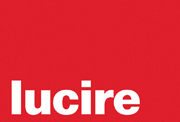|
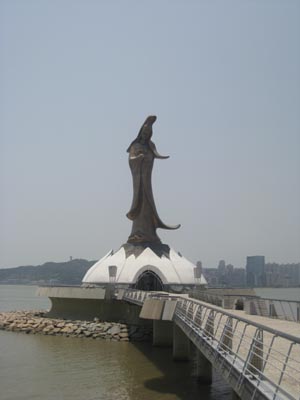
TWO YEARS AGO, I went to Macau with
a group of food writers and the founder of a top restaurant chain
looking for treasure amid the world’s largest construction site
outside of Dubai. The gold in question, back in March 2007, was
the recipe for the perfect representation of African chicken—the
signature dish of Macau blending together influences of Portugal,
mainland China and the Silk Road. While we found the best examples
of the dish and other specialties at Littoral and a Hospitality
and Restaurant School, we fed our souls elsewhere, at spots like
the Macau Museum and the Handover Museum and along the bustling
main street connecting Senado Square to the Ruins of São
Paulo Cathedral.
There were plenty of stops en route to elaborate Chinese
temples and earthy local restaurants to view signposts for the Macau
that did not yet exist—building models and scaffolding. Alorino,
my guide from my first visit, insisted to truly experience Macau,
it was necessary to return in a few years to see it at the peak
of its potential. Fast forward to 2009. An invitation to return
was an opportunity I could not pass up, and an ideal place to spend
my 40th birthday to boot.
After being spoiled in Cathay Pacific’s Business Class
with Agnès B. amenity kits and restaurant-grade food, I arrived
in Macau via a connecting Turbo Jet ferry amid a wave of nostalgia,
followed by visual shock of a city that doubled in size and was
twice as luminous. This time around, Teresa Gomes—a friend and co-worker
of one of my mother’s best confidantes from her epic 1960s’ European
trip—was our guide. Teresa’s approach to showing off Macau, was
sweetly personal and deftly blending usual must-sees with her personal favourite restaurants, side streets, temples, food markets and shops.
As the energetic Teresa introduced us to her Macau,
and waxed poetic about her and my mother’s mutual friend, I tried
to figure out why Macau felt even more of a discovery than the last
trip. Sure, Hong Kong’s international polished glamour was an hour
away by boat, but there was something that remained so earthily
appealing about Macau, even with its extreme makeover nearing completion.
Since my last visit, loads of glossy Macau magazines cropped up,
including an edition of Tatler and Macau
Closer, edited by Teresa’s son. There is also a spectacular
new Cirque de Soleil show, Zaia, that does a great business
by thematically touching on world peace and the environment. However,
even with a skyline that announces ‘twenty-first-century powerhouse,’
Macau still has not shaken its character and rustic roots.
As Teresa will show you, the Macau Museum is as compelling
as ever. The original Grand Lisboa, where the Roger Moore-as-James
Bond flick The Man with the Golden Gun was shot, has a new
paint job. Macau Tower and Fisherman’s Wharf are still providing
entertainment for sophisticates with families, while temples around
town and the bustling markets are making a taste of mainland China accessible to people coming in from outside Asia. The old house
of nineteenth-century trader Lou Kau is the perfect place to be
surrounded by old world Chinese beauty while his Lou Lim Ioc Gardens
is a perfect place to simply breathe and take in impromptu music
and opera performances and tai chi sessions, even as modern Macau
grows up around it.
Taipa and the Cotai strip, meanwhile, are taking on
a sheen similar to Repulse Bay in Hong Kong. Big-city sophistication
and amenities are tucked into hills and valleys, allowing rural
charm to shine through. Across the water from 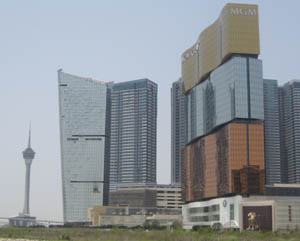 Macau’s
downtown and the monolithic collection of now scaffold-free casinos
lies the domain of more sophisticated escapes in Taipa. An
old establishment once called the Crown Hotel has been fully
transformed into the Altira Macau, a venue that epitomizes
everything that’s right about twenty-first-century architecture
and design. Rather than borrow ideas (even successfully) from
the past as Sofitel Ponte 16 and MGM
Grand have done, Altira is the sensory equivalent of 150-year-old
cognac served in a contemporary Baccarat glass. The flower-shaped
building is a cohesive whole and yet allows the hotel guests to
retreat to privacy if they choose, while another petal welcomes
a loyal fan-base of expat residents to enjoy the visual feats offered
by restaurants like Kira (Japanese), Aurora and 38. Happy hour at
Aurora is a social event, particularly on Fridays, where expat regulars
partake in wine tastings similar to those at good brasseries in
Roma and Milano, brimming with a buffet of cheeses, meats, condiments
and bread. The terrace is as close to heaven as one can get in the
area and yet still have the city’s glitzy heart in full view. Every
public space is a room with its own identity and personality—not
just a part of the hotel’s “theme” like Cæsar’s Palace or
the Luxor back in Vegas. Macau’s
downtown and the monolithic collection of now scaffold-free casinos
lies the domain of more sophisticated escapes in Taipa. An
old establishment once called the Crown Hotel has been fully
transformed into the Altira Macau, a venue that epitomizes
everything that’s right about twenty-first-century architecture
and design. Rather than borrow ideas (even successfully) from
the past as Sofitel Ponte 16 and MGM
Grand have done, Altira is the sensory equivalent of 150-year-old
cognac served in a contemporary Baccarat glass. The flower-shaped
building is a cohesive whole and yet allows the hotel guests to
retreat to privacy if they choose, while another petal welcomes
a loyal fan-base of expat residents to enjoy the visual feats offered
by restaurants like Kira (Japanese), Aurora and 38. Happy hour at
Aurora is a social event, particularly on Fridays, where expat regulars
partake in wine tastings similar to those at good brasseries in
Roma and Milano, brimming with a buffet of cheeses, meats, condiments
and bread. The terrace is as close to heaven as one can get in the
area and yet still have the city’s glitzy heart in full view. Every
public space is a room with its own identity and personality—not
just a part of the hotel’s “theme” like Cæsar’s Palace or
the Luxor back in Vegas.
Teresa’s favourite spots to shop and treasure hunt
are Splendid Sesame (a neat, miniature Indian bazaar tucked inside
the Grand Lisboa) and the Macau Culture Club (a favourite of mine
from my 2007 trip, as well). Beyond those stores, and some of Hong
Kong’s most popular boutiques (including Joy & Peace, Shanghai
Tang and Moiselle), the Macau of 2007 was primarily a treasure trove
of museums, culture and unusual food. Today, thanks to the multitude
of shopping opportunities offered by the casinos—especially the
city-within-a-city known as the Venetian–Four Seasons complex—one
could gamble 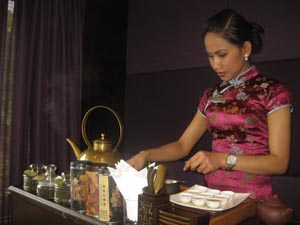 as
much on the latest fashions from every corner of the globe as she
could on bets in the city’s elegantly subdued casinos. as
much on the latest fashions from every corner of the globe as she
could on bets in the city’s elegantly subdued casinos.
While my last venture into Macau in terms of food was
focused on the fusion of Chinese and Portuguese flavours, Teresa
was intent on showing us how today’s Macau was a showcase for
many different types of food experiences. She chose to
stage my 40th birthday at a quiet little spot called Miramar,
which captured the flavour and ambiance of a Portuguese beachfront
inn on Coalone Island. Our group also feasted our senses at two
stereotype-shattering buffet places, Belcanção inside
the Four Seasons and Afrikana at Macau Fisherman’s Wharf, that had
everything but the 99¢ shrimp cocktails, wilted vegetables
and reheated mystery meats associated with the American concept
of the buffet.
Dim sum was a must, and Teresa made sure we experienced
that at two of her favourite places. On the first afternoon, we
tasted our way to a pleasant saturation at Imperial Court. Later
in the trip, did the same, but with a stunning Coalone backdrop
and a formal tea tasting at Kwun Hoi Heen. However, veterans of
earlier Macau visits needed their fix of African chicken and garlic
prawns, so a visit to Litoral—one of the city’s great old-school
and decidedly non-casino restaurants—was essential.
Though Teresa took us to visit A-Ma Temple and
her other favourite spiritual places so we, too, could receive the
goddess’s special blessings, there was no question in our minds
that Macau was a blessed spot for everybody from culture vultures
to gamblers, and from fashionistas to foodies. It is also proof,
that with a solid respect for history and some careful planning,
there are places out there that can be all things to all people.
•
Elyse Glickman is US west coast editor of Lucire.
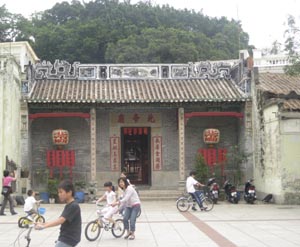
|
 |
Left The goddess that guards Macau. Below,
from top The iconic ruins of São Paulo. Away from the
maddening crowds: haute happy hours at Altira, one of Macau’s
most stunning and newest boutique properties on Taipa. Getting around
Macau. At Lines Lab, one
of the hot labels coming out of the city.
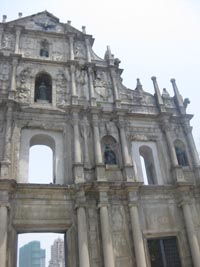
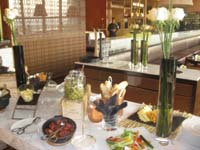
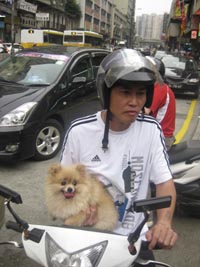
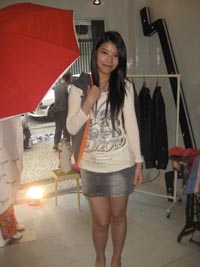
Inset photos, from top New Casino Resorts
like the MGM Grand Macau bring more viva to the vintage feel of
old Macau, just a few blocks away. Tea and dim sum at the Westin
Coalone. Bottom left Taipa, Macau.
|
